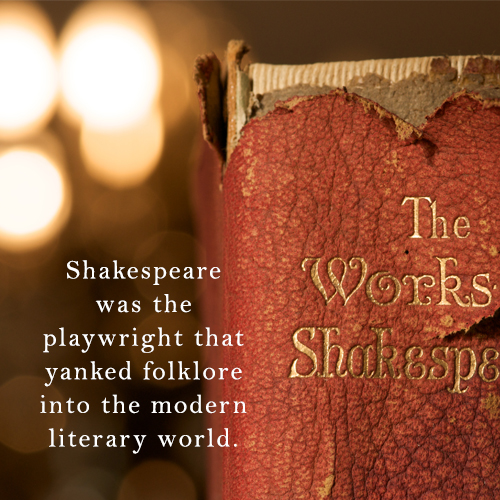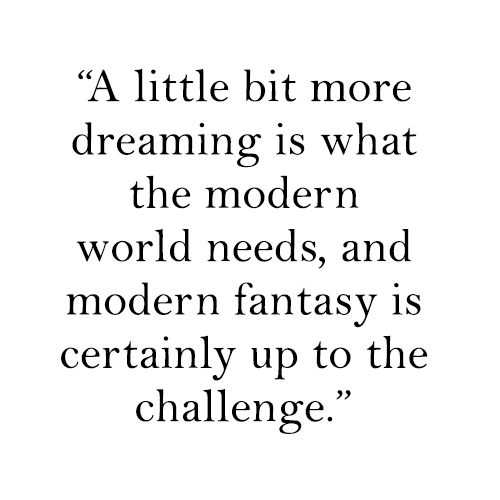Fantasy literature, spanning from YA to adults, has been on the rise in recent years—especially when it comes to the modern retellings of classic fairy tales that have been around for centuries. In fact, one of our very own SparkPress authors, Colleen Oakes, helped pioneer this landscape, first with her Queen of Hearts series in 2014 (which was sold to HarperCollins and is re-releasing this summer), and then with the Wendy Darling series, which debuted in 2015. The popularity surge in fantasy got us thinking about the genre’s roots, calling us to examine some of the early authors and works that influenced the core themes of fantasy today.
And when we say early, we mean it. One of the works that kept coming to mind was William Shakespeare’s A Midsummer Night’s Dream. While Shakespeare is believed to have died on his birthday, April 23, productions of his works (think Macbeth, Romeo and Juliet, and Hamlet) still sell out 400 years later, due to the beautiful language and themes of love, comedy, and sorrow. Not to mention he’s credited with dozens of common sayings. So at SparkPress, we decided to showcase just how far back the roots of modern society’s beloved fantasy genre goes, all the way to the dreamy state—or “fancy free”—of a midsummer night. And what better way to do this, than tap a Shakespeare guru at our neighboring Arizona State University?

Megan Woodyard, our Shakespeare guru
Enter our Shakespeare scholar Megan Woodyard. She is majoring in Statistics and English at ASU, currently taking a Shakespeare course where she analyzes the literary, thematic, syntactica l, and historical aspects of several of Shakespeare’s works. She has worked on multiple investigations into how specific literature can be interpreted in connection with modern themes, as well as thematic connections between past and present literature. Below, she provides a fascinating look at how A Midsummer Night’s Dream helped set the basis for modern fantasy works, from The Chronicles of Narnia to Twilight to Game of Thrones.
William Shakespeare is by far one of the greatest playwrights of all time. In fact, with so many stories, characters, and situations in modern literature you may catch yourself commenting, “Well, that’s very Shakespearian.” You might not even realize why that comment comes to mind, at first, for what is it about modern literature that screams Shakespeare at the top of its lungs?
Well to answer that query, look no further than the genre of modern fantasy. Modern fantasy is ever-rising, whether be it through developments in romantic fantasy, science-fiction and fantasy, or young adult fantasy. As a classic example of Shakespeare’s enablement of modern fantasy, let’s examine one of his most famous works, A Midsummer Night’s Dream. Shakespeare’s A Midsummer Night’s Dream is perhaps one of the best representations of the fantasy genre, packed with magic, romance, and, of course, a happy ending to rival all other fantasy novels. The magical staples of modern fantasy are present all over A Midsummer Night’s Dream. There are transformations, fairies, spells, and potions, all based heavily in English folklore. In a way, Shakespeare’s promotion and presentation of A Midsummer Night’s Dream propelled these mythical ideas’ entrance into the public eye, reforming concepts that were previously only legends into stories meant to be consumed by viewers and readers all over the literary spectrum.

Although modern fantasy novels have seen the emergence of magical creatures like fairies as more frightening, eerie creatures, Shakespeare’s A Midsummer Night’s Dream has creatures that harken back to our childhood storybooks, with whimsical characters like Peaseblossom, Cobweb, Mustardseed, and Moth. These fanciful interpretations of folklore are what modern readers remember as the original conceptual classics for fantastical characters. Modern interpretations of fairies as prowling, spine-chilling entities are just so, for readers compare them to their childhood Peaseblossom-type remembrances and look on with interest. Shakespeare’s fairies are the original “fairies” in most readers’ minds, for Shakespeare was the playwright that yanked folklore into the modern literary world.
But aside from fairies and magic, let’s talk about the happy ending, arguably one of the key aspects of the fantasy genre. After all, what makes a fantasy a fantasy, but perfection? Fantasies represent the things we dream of, the situations we wish we could experience, and the people we wish we could know. Fantasy is an escape from the mundane, a dream of a dragon crashing through the sky over the DMV, removing the reader from the never-ending melancholy of everyday life for a single moment. All individuals want to believe that everything will work out, that all problems will resolve themselves. Modern fantasy might have a wealth of conflicts and plot components, with characters experiencing endless trials and tribulations, countless plot developments, and multiple settings—but fantasy generally resolves happily. That’s what readers want to experience in fantasy: happiness and resolution. A Midsummer Night’s Dream has a happy ending, making the play a comedy by Shakespeare’s definition: the characters marry in absolute true love, there is no death, and all possible problems are reconciled with no long-tern, hurtful consequences. Most literature within the fantasy genre also ends happily, with quests concluding, characters professing eternal love, prophesies being fulfilled, villains being defeated, and so on. Everyone needs and wants a little bit of success and happiness penetrating the routine, and that’s what William Shakespeare understood.
As an example of Shakespeare’s chosen happiness lacing modern fantasy, look no further than love. The ideal fantasy is seen through love within A Midsummer Night’s Dream. When love is presented in A Midsummer Night’s Dream, love is a beautiful, perfect thing. When characters speak of loving, there are declarations of a supreme, benevolent power touching upon love, making love a fated occurrence, a perfect manifestation of something larger than the self — “true love” uninhibited by circumstances or obstacles, immovable as an “edict in destiny.” Characters love with the entirety of being. When Lysander loves Hermia, he sings her love songs, gives her gifts, showers her with compliments, and promises to be with her forever. Current fantasy, especially young adult fantasy, has significant overtones of unconditional love; consider the brotherly love in Lord of the Rings, the friendship-driven love within Harry Potter, or any number of passionate fantasy romance novels.
A Midsummer Night’s Dream is a compilation of utopian yearning; the reader marvels over the purity of characters, the irrevocability of wondrous love, the ridiculousness of conflict, the intrigue of the magical spells and fairies, and the flawlessness of the ending: as Shakespeare might say, all’s well that ends well. So how does the modern reader utilize Shakespeare, and fantasy as a whole? As A Midsummer Night’s Dream’s sensible Theseus observes the love-struck romantics discussing their fantastical “dreams,” he remarks, “I may never believe / these antique fables nor these fairy toys.” With the ordinances and obligations of the contemporary world, it might be similarly difficult for modern readers to consider and explore the ever-growing genre of fantasy, believing fantasy “no more yielding than a dream,” and immaterial. Yet readers’ literary excursions should be seen as just that – dreams, vacations, and escapes.
Modern fantasy provides an escape for readers suffocated by the consequences and tragedies of everyday life. Shakespeare’s Midsummer Night’s Dream captures the need for a “merry and tragical” outlook, the need to sometimes lose oneself in a perfect love, a perfect ending, and a perfect world.
A little bit more dreaming is what the modern world needs, and modern fantasy is certainly up to the challenge.

Leave A Comment